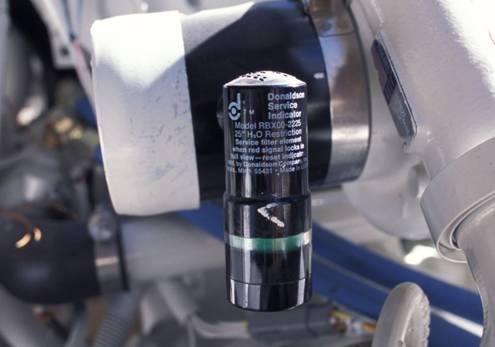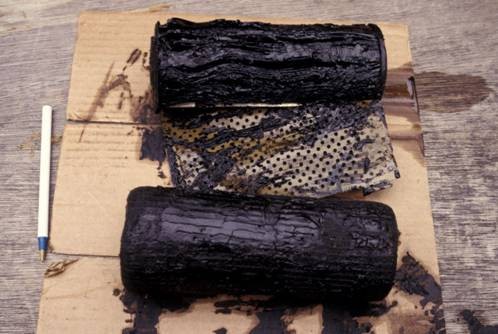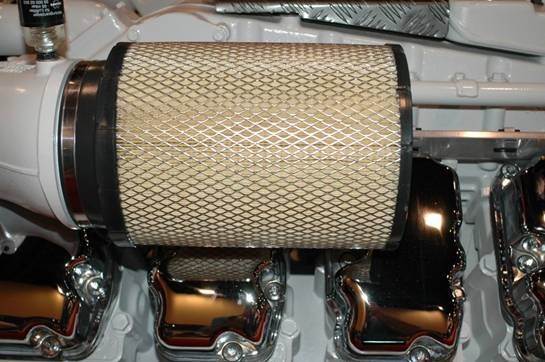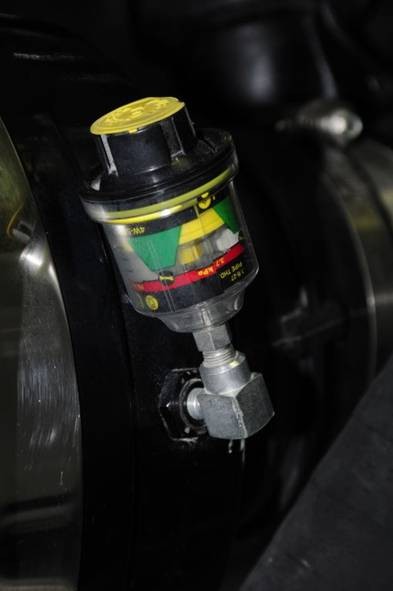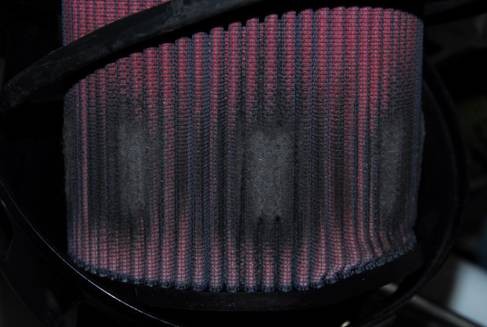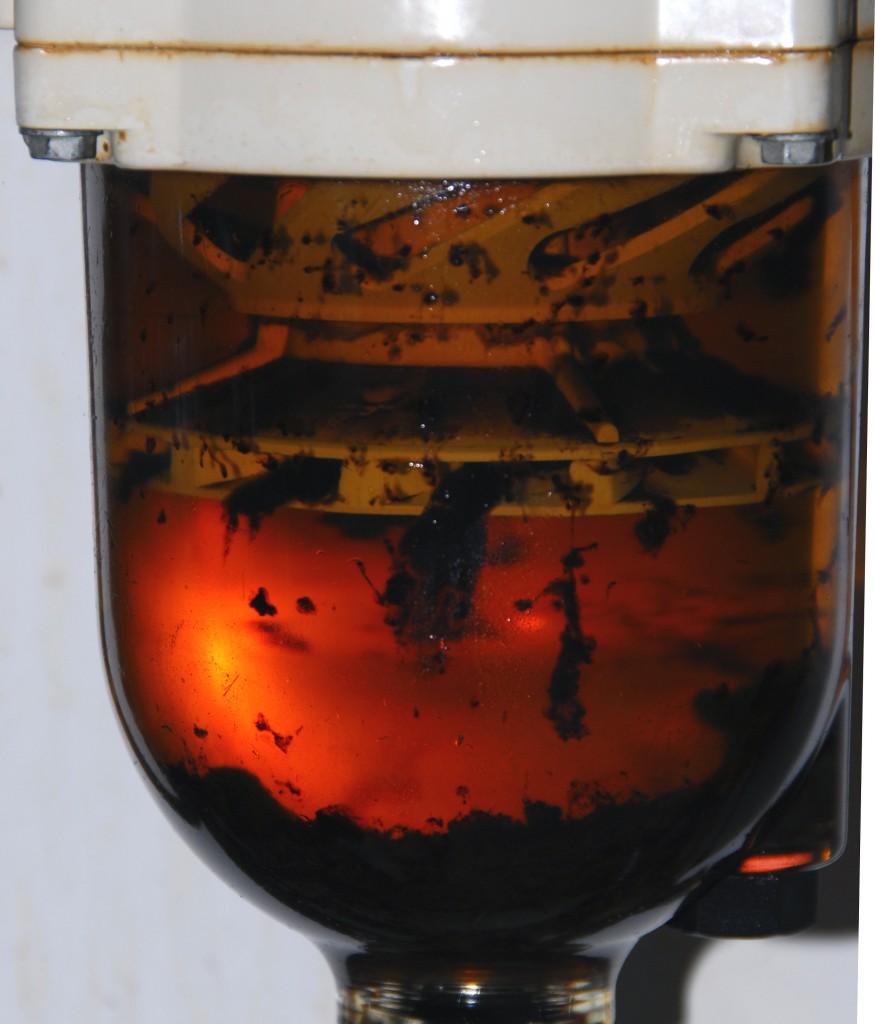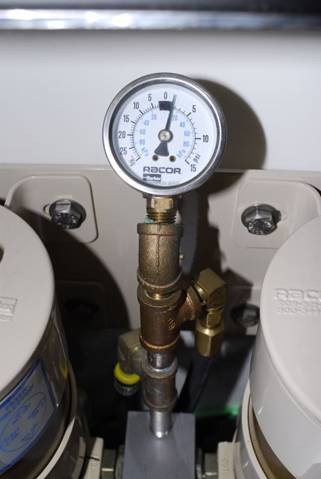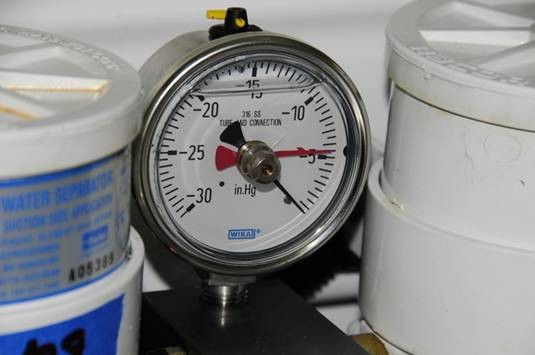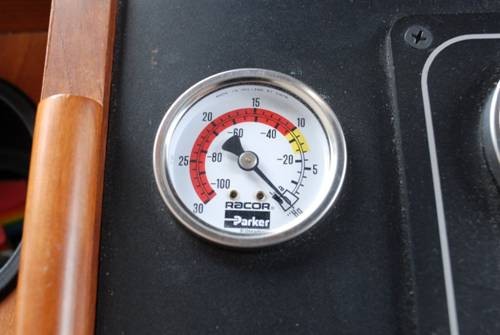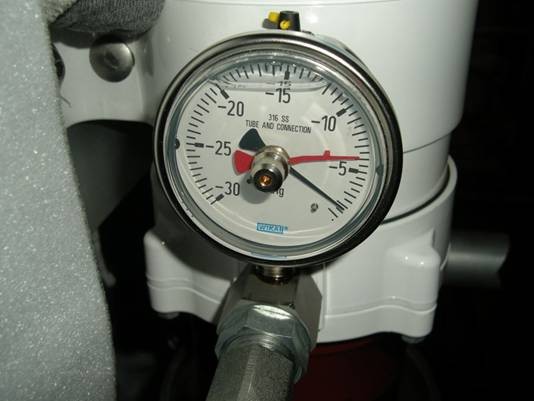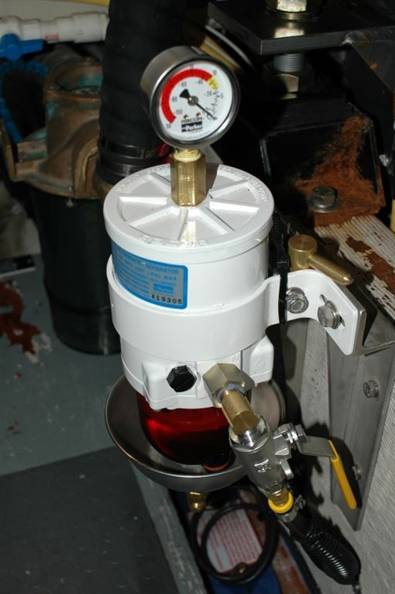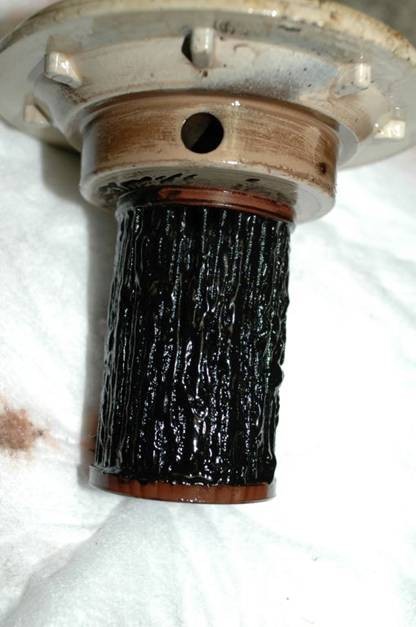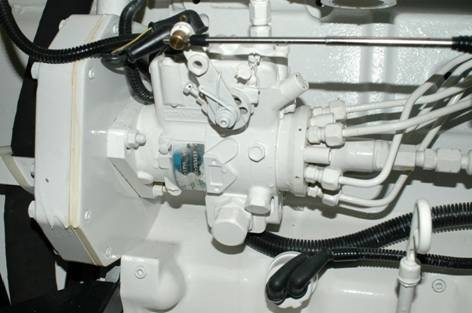By Steve D’Antonio
Copyright February 2014
Engines will often continue to run even when filters are extremely contaminated, as are the ones shown in this image. This engine ran, however, at what price, was contamination making its way to the injection system? A vacuum gauge would have alerted the user to the need for filter replacement long before they became this impacted.
Dirty air filters are good, as are dirty fuel filters. To a point that is. Most cruisers fixate on the cleanliness of filters, especially fuel and perhaps to a lesser extent air, with good reason. After all, what engine can operate reliably and efficiently if it’s choking for air or starving for fuel, right? Although it may come as a surprise, the answer isn’t a simple yes or no.
Air Filters
I was recently aboard a vessel as a mechanic was carrying out an engine inspection. I discussed with him his findings and, among these was a comment indicating that the air filter required replacement. Typically, marine engine rooms are low on dust so air filter elements last a long time when compared to automotive applications. If the engine room’s insulation is disintegrating or if there’s a water leak that’s creating mist then air filter elements do of course succumb to clogging much more quickly. In this case, however, the engines had less than 1,000 hrs on them and the engine room was immaculate, exceptionally well kept. “Why”, I asked the mechanic, “are you suggesting that the air filter elements be replaced?” “It’s in the book” he responded, “air filters are supposed to be replaced annually”. He pointed to the debris visible in the filter housing window. Appearances, however, can be deceiving. While some debris was visible on areas of the exposed portion of the element, the bulk of the filter surface was clean.
Air filters for modern diesel engines are costly; most are replaced needlessly, based on annual service guidelines rather than air flow restriction.
While the mechanic’s intentions were good, regardless of these visual observations, the only way to really know the condition of a filter element is to measure the restriction it’s imparting on the system. For air filters that’s quite easy, it only requires the use of a filter restriction gauge, standard equipment on many of today’s engines.
Air filter restriction gauges like the one shown here alert the user to the need for replacement.
Most air filter restriction gauges show some sort of color coded indicator, green for all clear, for instance, and red for excessive restriction.
The gauge measures and retains the highest vacuum, typically recorded in inches of water vacuum, which can be observed at any time, even when the engine isn’t running.
Most OEM gauges include a “change” or red zone indicating replacement is necessary. Gauges are available for aftermarket installations as well (one vendor for such gauges is Filter Minder, www.filterminder.com ); one can be made to work with virtually any application where an air filter is used. In the case of aftermarket installations it’s important to determine the engine manufacturer’s maximum allowable restriction level, typically it’s somewhere between 12 and 20 inches of water vacuum. Once you know what this limit is I recommend applying a label on or adjacent to the vacuum indicator recording this information for anyone to see during an inspection. Air intake vacuum is measured at full load with wide open throttle for turbocharged diesel engines and at high idle with no load for those relying on natural aspiration. In the case of the average cruising vessel, inspecting the vacuum indicator during every engine room inspection, at least daily when underway, will immediately reveal an abnormally high vacuum reading.
When viewed through air intake ports that surrounded this air filter, debris appeared to be severe. However, it’s localized (it should, however, be addressed as it may be an indication of disintegrating engine room insulation) and had little effect on the restriction gauge.
Although it may seem counterintuitive, replacement of filter elements based on the number of engine hours accumulated or seasonally may be detrimental to their efficiency and performance. The fact is, whether it’s for engine combustion air, fuel, coolant or even your HVAC system most filters work better after they are “broken in”, when they’ve captured some debris. The debris captured in the filter’s element makes it likely that any debris passing through subsequently will be more easily captured.
Fuel Filters
Contamination in primary fuel filters is, to some degree, normal, however changing them based on engine hours or the calendar is far from ideal. Replacement based on the level of contamination and resultant vacuum it creates is, on the other hand, an ideal approach.
Fuel filters benefit from a similar approach, their elements should be replaced based on vacuum for primary filters, measured in inches of mercury in this case, and pressure for secondary filters. Vacuum gauges equipped with recording drag needles perform the same function as the air filter vacuum gauge, they record the highest vacuum experienced until reset to zero.
A stock fuel filter vacuum gauge; this one lacks a drag needle, making it necessary for the operator to monitor it while under way to determine the amount of restriction.
A more advanced vacuum gauge, it is liquid filled and therefore vibration dampened. The drag needle records the highest reading and retains it for viewing at any time, even when the engine is off.
An in-dash fuel filter vacuum gauge enables the operator to monitor, in real time, fuel restriction for any reason, be it a clogged filter or some other fuel supply issue.
The greatest vacuum is likely to be experienced when the engine is at full throttle or at least under a heavy load, 75% or more, so be certain to check the drag needle on your gauge after any high load runs and daily when under way otherwise.
As an aside, if your primary fuel filters must be replaced more often than every 1000 gallons of fuel use, it’s likely that your fuel tanks are in need of cleaning. Fuel usage, rather than engine hours, is a more accurate representation of filter and tank health.
Vacuum gauges are available from most primary fuel filter manufacturers. For aftermarket applications high quality, liquid-filled, vibration dampened drag needle-equipped, Wika fuel vacuum and pressure gauges are also available from FN Cuthbert, www.fncuthbert.com
Ideally, fuel filter vacuum gauges should be installed in the outlet plumbing of single filters (top), rather than in place of the T handle (above). T handle gauge kits run several risks, including gauge damage and inaccuracy, and they make filter replacement more challenging.
For common Racor primary turbine series fuel filters, my preference is for installation in the fuel fitting on the outgoing side of the filter housing. Kits designed to allow installation of vacuum gauges in place of standard filter T handles, available from Racor, are readily available, and easy to install. However, I eschew this installation approach for several reasons. First, they remove or supplant the T handle, making filter element replacement a task that now requires a wrench instead of simply using your hands. Two, the vacuum gauge installed in this position is more prone to damage as it stands well above the filter housing, and it is somewhat delicate. I’ve seen these broken off after being snagged by a tool bag handle. Three, and finally, each time the filter element is replaced the gauge must be removed, subjecting it to damage, or inaccuracy as a result of being dropped or otherwise shocked.
Engines may continue to operate with seeming normalcy even when filters are severely clogged. The insidious side effects, however, can include premature failure of diaphragm-type lift pumps.
Vacuum-Driven Philosophy
When I proffer the vacuum driven replacement approach, especially for fuel filters, I’m often asked if filter elements deteriorate if left submerged in fuel for too long, more than a year for instance. Most filter manufacturers recommend replacement intervals that do not exceed a year, however, it must be remembered that they do have a vested interest in selling filters. In all the years I worked as a marine mechanic, and operating a small fleet of diesel powered personal and commercial vehicles, I have yet to encounter a filter element that has disintegrated or shown any signs of deterioration as a result of prolonged submersion in diesel fuel. This only stands to reason, elements will invariably be left in fuel for extended periods, whether intentionally or inadvertently, if any were to deteriorate they would likely cause severe and costly damage to injection systems, which in turn would adversely impact the reputation, and sales, of any filter manufacturer.
Fuel injection pumps may suffer cavitation damage when starved for fuel, a scenario that can occur when engines are operated with clogged fuel filters.
Having said that, I’ve only ever installed genuine Racor brand primary filter elements in their filter housings; thus, I can’t speak for the reliability or longevity of filter elements offered by other, potentially sub-standard manufacturers. The same is true of secondary fuel filter elements; I’ve cut open scores and have yet to encounter one that has shown any signs of deterioration. Leaving an element in place for a year or even two, therefore, represents, in my opinion, little if any risk for deterioration provided it’s clean.
There are other reasons to avoid unnecessary filter replacement. Each time a filter is replaced the risk of entraining dirt or debris into the air intake, fuel or other filtered systems is increased. Additionally, throwing away a filter whose life is not yet over is wasteful, costly and environmentally irresponsible.
For more information on the services provided by Steve D’Antonio Marine Consulting, Inc. please e mail Steve at info@stevedmarineconsulting.com
or call 804-776-0981

